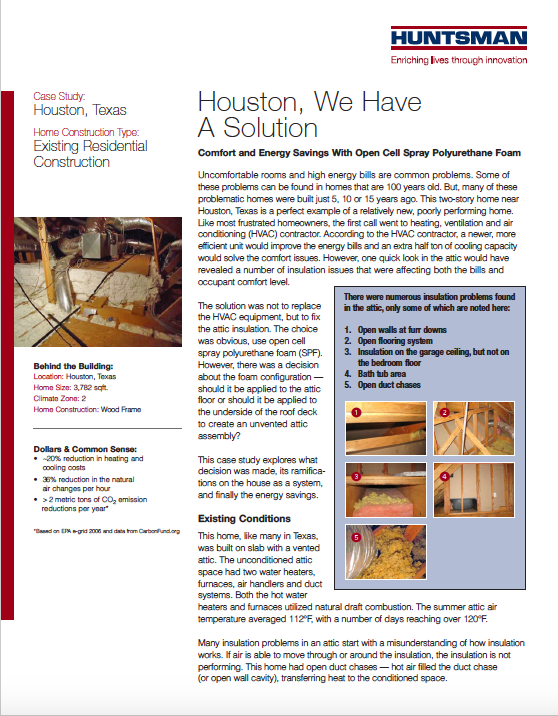Houston, We Have a Solution

Uncomfortable rooms and high energy bills are common problems. Some of these problems can be found in homes that are 100 years old. But, many of these problematic homes were built just 5, 10 or 15 years ago. This two-story home near Houston, Texas is a perfect example of a relatively new, poorly performing home. Like most frustrated homeowners, the first call went to heating, ventilation and air conditioning (HVAC) contractor...
Houston, We Have A Solution
Comfort and Energy Savings With Open Cell Spray Polyurethane Foam
Uncomfortable rooms and high energy bills are common problems. Some of these problems can be found in homes that are 100 years old. But, many of these problematic homes were built just 5, 10 or 15 years ago. This two-story home near Houston, Texas is a perfect example of a relatively new, poorly performing home. Like most frustrated homeowners, the first call went to heating, ventilation and air conditioning (HVAC) contractor. According to the HVAC contractor, a newer, more efficient unit would improve the energy bills and an extra half ton of cooling capacity would solve the comfort issues. However, one quick look in the attic would have revealed a number of insulation issues that were affecting both the bills and occupant comfort level.
The solution was not to replace the HVAC equipment, but to fix the attic insulation. The choice was obvious, use open cell spray polyurethane foam (SPF). However, there was a decision about the foam configuration — should it be applied to the attic floor or should it be applied to the underside of the roof deck to create an unvented attic assembly? This case study explores what decision was made, its ramifications on the house as a system, and finally the energy savings.
























